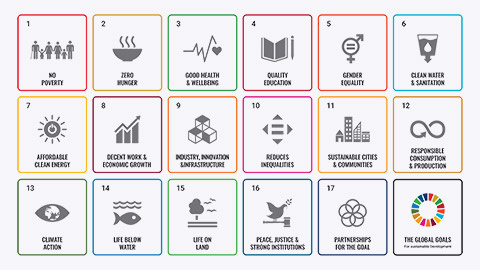Welcome to creating value within marketing!
In this topic, you will learn about:
- Explain what marketing is, the marketing mix, what can be marketed, and the value of marketing.
- Deconstructing the definition
- Needs, wants and demand
- The marketing process
- Selecting customers to serve
- Choosing a value proposition
- Understand value from the perspectives of customers, producers, and society.
- Explain the evolution of the marketing concept
- The changing landscape

Marketing is first and foremost about satisfying customer needs in a profitable manner. You participate in the marketing process with every purchase you consider and transaction you make. When you purchase a product or a service, you would conduct your own market research in term of reviewing different companies in terms of factors such as services or products offered, do they meet your needs? Are they what you need to do what you are intending to do? Is the cost within your budget? Do you feel their service or product offered is value for money? This is marketing, from the consumer perspective however the business should take these aspects in mind when applying marketing techniques.
According to the AMA ( American Marketing Association) Marketing is the activity, set of institutions, and processes for creating, communicating delivering and exchanging offerings that have value for customers, clients, partners, and society at large.
The consumer is at centre of marketing activity, but it’s a two-way street.
- Products are sold to satisfy both consumer’ and marketers’ needs.
- But the company also has objectives (to be profitable, survive, etc.) that need to be met in order for it to stay in business.
Take a moment to look at the figure below which illustrates the flow of stages within a simple marketing process

Activity, institutions, processes…?
Let us deconstruct this a little further. Marketing encompasses a wide range of activities, beyond simple functions such as sales and advertising, for example; supply chain management and retailing, branding and new product development, market research, segmentation/targeting/positioning, other promotional mix elements and also involves interactions with non-marketers such as finance, human resources, M I S, Operations, Accounting, etc.
Marketing activities affect and are in turn, affected by, the firm’s other operations. Marketing managers work closely with personnel from other functional areas of the business. For instance:
- marketers work with accounting and finance in managing products, determining profitable prices, and setting marketing budgets.
- marketers work with operations to make sure products are produced in right quantities and on time.
- marketers work with research and development (R&D) specialists and engineers to create and commercialize new product concepts.
Marketing is also a decision process which managers determine and implement the strategies that will help the firm achieve its long-term objectives. Let us now have a look into the division of the factors that can be controlled by a company in order to positively influence its consumers to purchase its products, this is known as the marketing mix.
The MARKETING MIX!- The 4 P’s

The marketing mix consists of the tools used by the organization to create a desired response among its target market and is commonly referred to as the “4 P’s”.
Each of the four P’s represents a piece of the puzzle which must be solved to successfully market the product. The product, price, place, and promotion decisions are entirely interdependent, as symbolized by the fact that the puzzle pieces lock together. Let us look at each of these in more detail below:
- Product: includes all aspects of the product design, its packaging, and any associated aspects (such as warranty and free delivery). Determining the specific combination of benefits sought by consumers is a key marketing task.
- Promotion: includes all activities marketers undertake to inform consumers about their product. Many marketers now refer to promotion as marketing communications, and includes advertising, personal selling, publicity and sales promotion activities directed at both consumers and the traders (retailers and wholesalers) who aid in the distribution of the product.
- Price: refers to the amount the consumer must exchange in order to receive the product or service offering. Higher prices can communicate higher quality for some goods where as marketers often lower price via sales promotions in order to increase demand.
- Place: this “P” is key to making the product available to consumers at the desired time and location. Place decisions are closely tied to the supply chain – the set of firms that work together to get a product from a producer to a consumer.
In summary, the following aspects should be considered:
- Creating: the Product
- Communicating: through Promotion
- Delivering: through “Place” strategies
- Exchanging: through Price
Let us have a look further into an exchange, and the transaction that must occur for the exchange to be complete.
Exchanges, transactions and relationships
An exchange is the act of obtaining a desired object from someone by offering something in return, this may be more than simply buying or trading products and services, for example:
- the marketer tries to bring about a response to some market offering
- a political candidate, for instance, wants votes
- a golf club wants members
- an orchestra wants an audience
- an online community of practice, such as BimmerPost (BMW owners), wants subscribers who help each other
- and a social action group, such as Amnesty Australia, wants idea acceptance.
A transaction is a trade between two parties that involves at least:
- two things of value
- agreed-upon conditions
- a time and place of agreement
Such as bartering or buying. In a transaction, we must be able to say that one party gives X to another party and gets Y in return. For example, if you pay $1650 for a television set to Harvey Norman in Sydney or Singapore, you are engaged in a classic monetary transaction.

Needs: are states of felt deprivation, also defined as the difference between a consumers’ actual state and some sort of ideal or desired state.
- difference between actual and desired state
- can be physiological or psychological
So right now, some of you may be hungry, you need food, which is your current state of deprivation. After class, you may buy a snack or meal—actions designed to move you to your desired state. There are many ways you can satisfy your hunger, but you want a Snickers candy bar. Is a need the same as a want? Not really.
Wants: are the form human needs take, as shaped by culture and individual personality.
- Desire to satisfy a need in a particular way
- Influenced by history, past experience, and culture
Wants relate to specific brands or types of products, and are often socially or culturally influenced. Wants aren’t always affordable or realistic. For example, America is a highly mobile society; many people need a car. However, at least some of the people driving a practical, four-door sedan like the Toyota Camry wanted to buy a two-door, fun to drive a sports car, like a Porsche 911. Wants are typically influenced by both social (family, peers, etc.) and cultural factors.
Benefits: Marketers try to motivate actions – purchases for example – that satisfy needs by providing consumers with products that offer the benefits (need satisfying characteristics) they seek, the customer receives benefit when their need(s) are satisfied, this is why the concept of demand is so important.
Demand: Demand includes only those consumers who have both the buying power and desire (want) for a particular brand, coupled with the resources needed to obtain them.

Marketing defined: value for customers
As a first step, marketers need to understand customer needs, wants, and demands, and the market within which they operate.
The process by which marketing organisations engage customers, build strong customer relationships, and create customer value in order to capture value from customers in return is key to ensuring a strong and loyal customer network.
Firm’s that embrace the marketing concept constantly seek information about current or changing needs from current and potential customers, using company initiated research efforts such as focus groups and survey research, they typically would conduct this research with different groups of people who interact with the product:
- Stakeholders: are buyers, sellers, investors, community residents, citizens and consumers.
- Consumers: are defined as the ultimate user of a good or service.
Products and services are sold to satisfy both consumers’ and marketers’ needs – thus consumers need items that provide value while marketers need to earn profits. While the “customer is king” mentality is a good way to train your employees to think, it must be implemented successfully and in a manner that allows the business can earn a profit.
Many firms also employ individuals who review blogs, newsgroup postings, and Internet-based complaint websites, in addition to analyzing feedback from consumers received via email, mail or phone.
Marketing is a social and managerial process by which individuals and organisations obtain what they need and want through creating and exchanging value with others.
What is marketing management?
We have just looked into marketing and the stages within, now let us look further and discuss marketing management. What is meant by the term marketing management?
Marketing management is the art and science of choosing target markets and building profitable relationships with them.
To design a winning marketing strategy, the marketing manager must answer two important questions:
- What customers will we serve? (i.e. Who is our target market?)
- How can we serve these customers best? (i.e. What is our value proposition?)
Let us look at these questions in more detail.
There are a few key factors to be aware of and consider when selecting which customers to serve in your market. It is important to select your customer base through making informed decisions in regards to your aim you wish to achieve and the needs of your customers. Consider the points below and how these supports informed decision making.
A marketing organisation’s demand comes from two groups:
- new or potential customers
- repeat or existing customers
Marketing decisions focus on:
- finding, increasing and retaining demand
- changing or reducing demand
Many service firms and not-for-profit organisations need to engage in demarketing:
- permanently to discourage antisocial behaviours
- temporarily to cope with peak demand periods and overfull demand
How can we serve these customers best?
What is a marketing organisation’s value proposition?
- it is the set of benefits or values that it promises to deliver to customers to satisfy their needs
- it should differentiate brands and position them in the marketplace
For example, KFC’s slogan “It’s finger-lickin' good” is KFC’ value proposition, their statement in regards to how they deliver value to their customers.
Take a look at the following video which looks at Coca-Cola marketing strategy and their approach which has brought growing success year after year, they don’t “sell the drink” they sell the feeling they wish to create when seeing the red and white colours.
Going back to the creation of value…
Take a look at the following tables which outlines needs, wants, benefits and demands which are prevalent within the marketing industry, take the time to become comfortable with these terms and how these may translate into day to day considerations within the marketing process.
| Term | Definition | In Practice |
|---|---|---|
| Need | The recognition of any difference between a consumer’s actual state and some ideal or desired state. | If the difference is big enough, the consumer is motivated to take action to satisfy the need. When you’re hungry, you buy a snack. If you’re not happy with your hair, you get a new hairstyle. |
| Want | The desire to satisfy needs in specific ways that are culturally and socially influenced. | If two students are hungry, the first student may be a health nut who fantasizes about gulping down a big handful of trail mix, whereas the second person may lust for a greasy cheeseburger and fries. The first student’s want is trail mix, whereas the second student’s want is fast food. |
| Benefit | The outcome sought by a customer that motivates buying behavior that satisfies a need or want. | After several years when sales were down, McDonald’s responded to the number-one request of its customers: breakfast all day. The new program attracted lapsed customers back and increased lunch business.1 |
| Term | Definition | In Practice |
|---|---|---|
| Demand | Customers’ desires for products coupled with the resources needed to obtain them. | Demand for a snappy red BMW convertible includes the people who want the car minus those who can’t afford to buy or lease one. |
| Market | All the customers and potential customers who share a common need that can be satisfied by a specific product, who have the resources to exchange for it, who are willing to make the exchange, and who have the authority to make the exchange. | The availability of scholarships, government aid, and loans has increased the market for college education as more students can afford an education. |
| Marketplace | Any location or medium used to conduct an exchange. | Today the exchange may be face-to-face or through a mail-order catalog, a TV shopping network, an eBay auction, or a phone app. |
Marketing creates value for consumers, can it create value for society in general?
Is it possible to make profits and contribute to society and the planet in a positive way? Most large companies today pay attention to corporate social responsibility issues. Firms like Target produce annual sustainability reports that highlight the firm’s goals and achievements in reducing its overall environmental impact. Wal-Mart is also a champion of corporate sustainability.
Corporate responsibility at Target
- in 2012, Target set goals for all seafood sold in stores to be sustainable and traceable.
- reusable bag program saves consumers $7 million.
- more than 50% of apparel is labeled “machine wash cold” to help reduce energy consumption.
A growing segment of consumers take into account sustainability and other social issues in their decision-making and consumption behaviours
Sustainability and green marketing

Sustainability: is sometimes referred to as a “Cradle to Cradle” philosophy, as it describes the ideal condition where a product is made from natural materials and is fully reusable, recyclable, or biodegradable, leading to net resource depletion rate of zero.
Sustainability applies to main aspects of business, including social and economic practices (such as humane working conditions). Another crucial aspect of sustainability examines the environmental impact of the product taking into consideration a product design focus that seeks to create products that meet present consumer needs, without compromising the ability of future generations to meet their needs.
Green marketing: is a marketing strategy that supports environmental stewardship, thus creating a differential benefit in the minds of consumers. It should not be confused with greenwashing, a term which defines those who give the perception of environmental consideration through misleading information. Green marketing deals with the development of marketing strategies that support environmental stewardship by creating an environmentally-founded differential benefit in the minds of consumers. This involves developing marketing strategies that support environmental stewardship by creating an environmentally founded differential benefit in the minds of consumers. Most companies are spending more on green initiatives.
Green marketing is one aspect of a firm’s overall commitment to sustainability. A recent study on the impact of green marketing uncovered some interesting results:
- About half the companies reported that they are consciously taking steps to become greener.
- More than 80 percent of respondents indicated they expect to spend more on green marketing in the future.
- Companies with smaller marketing budgets tend to spend more on green marketing and also think green marketing is more effective than larger companies do.
- By far the most popular medium for green marketing was the Internet, with 74.2 percent of respondents having spent money online.
- Marketers that track marketing spending and its relation to sales believe people will pay more for green products.
- Marketers tend to lead green initiatives; 50 percent of firm managers surveyed agree that control of the green (sustainability) program is in the hands of marketers.
- Marketers that track marketing spending and its relation to sales believe people will pay more for green products.
- Marketers tend to lead green initiatives; 50 percent of firm managers surveyed agree that control of the green (sustainability) program is in the hands of marketers.
Now we have discussed the marketing process, customer selection and deciding on a suitable value proposition, now let us have look at the differing perspectives for consideration of the different stakeholders in our target audience. What is meant by value from the perspective of a customer?
Value from the customer’s perspective
Value in the eyes of the customer is the ratio of costs (price) to benefits (utilities). In reality however, the value proposition includes the whole bundle of benefits the firm promises to deliver, not just the benefits of the product itself. In fact, many homogenous products (Coke, Pepsi) are marketed more on the basis of their image than they are on the practical, functional benefits provided.
Let us now think about the importance of brand image as part of the value proposition in more detail. Think of a brand of a product or service that is very important to you—one you’ve bonded with to such an extent that you probably wouldn’t buy a competing brand, even if it was put on sale. Think about what is it about that brand that intrigues you? What efforts have marketers made to build a relationship between you and the brand?
Value From the Seller’s Perspective
Sellers want and need to provide value through developing a competitive advantage. A competitive advantage can be attained by a firm when:
- The firm has a distinctive competency: better marketing department, patents, superior RD department, production processes that provide quality products at lower cost, etc.
- The firm is able to use their distinctive competency to create products with a differential benefit. An automobile with greater fuel efficiency, that is more comfortable, that is exciting to look at and to drive. The marketing communication create an image of the product that entices consumers to want it. Owning a patent for a pharmaceutical drug means the company is the only one who can product a medication that helps millions of people.
- Providing a differential benefit means the company has an advantage over other firms producing similar products, taking into account the flowing:
- something unique that customers want,
- reasons for customers to pay a premium for the product, and
- a strong brand preference
Take a look at the following table which lists examples of companies, their distinctive competencies to the differential it creates for targeted customers.
| Company | Distinctive Competency | Differential Benefit | Competitive Advantage |
|---|---|---|---|
| Coca-Cola | Distribution and marketing communications | Convenience and brand awareness for customers all over the world | Other soft drinks are unable to take loyal customers away from Coke. Coca-Cola has more than 50% of the world soft-drink market. |
| Apple | Product quality and design | Easy access to cutting-edge technology | Apple’s sales of its Mac computer increased 28.5% as the overall market for PC's decreased. |
| Southwest Airlines | Price point | Appeals to budget-conscious consumers | Southwest is the number one domestic carrier in the U.S. |
| Amazon.com | Fulfillment and distribution | Availability, convenience, and ease of access of product | Amazon holds about a 50% market share for books sold via the Internet. |
| Starbucks | Product quality | Customer satisfaction | Starbucks has just under 33% of the market share in its industry. |
Can you think of other examples of how companies achieve a competitive advantage with a distinctive competency?
Let us take a moment to refamiliarise ourselves with the marketing process by reviewing the following image:

How do companies provide value for their customers and build these relationships? They do this through competitive advantage and in turn, foster positive relationships with their customers.
Marketers can build said relationships at different levels depending on the target market, for example:
- basic relationship
- full partnership
- club marketing programs
- frequency marketing/ loyalty programs- these operate on a quasi-club basis where members are issued with a card and accrue points for every purchase made using the card. These points can subsequently be exchanged for goods, bonuses or cash.
The digital age: Online, mobile and social media marketing
In this modern era, there are many more avenues available for constructive and effective marketing than there used to be. This offers more opportunities to reach the desired target market, gain detailed insights as to their preferences and responses, therefor, enabling the marketer to continually fine tune their targeting and engagement methods. Let us have a look at some examples.
Digital and social media marketing

This involves the use of digital marketing tools, such as websites, social media, mobile ads and apps, online video, email, blogs and other digital platforms, to engage consumers anywhere, anytime via their computers, smartphones, tablets, internet-ready TVs and other digital devices. It is often the case that more than one of these methods can be found, for example, on a single web page. When browsing the internet these days, it is difficult to come across a brand website or traditional media ad that does not feature links to the brand’s Facebook, Twitter, Instagram or any other social media sites.
Online social media provides a digital home where people can connect and share important ( and not so important…) information and moments in their lives, incorporating and accurately using these channels is ideal for real-time marketing.
Mobile marketing
Mobile marketing is perhaps the fastest-growing digital marketing platform. Large portions of time are spent on mobile phones with four out of five smart phone users using their phone to:
- access their bank account for online transfers and payments
- browse product information through apps or the mobile web
- make in-store price comparisons
- read online product reviews
- find and redeem coupons
The changing world of marketing
Marketing has experienced many changes over the years.
- The Production Era: Henry Ford
- The Sales Era: The big consumer society after WWII
- The Relationship Era: Started in 1970’s: marketing concept and TQM ( Total Quality Management) was used. (Read Moments of Truth article. )
- The Triple Bottom Line Era: Societal marketing concept: philosophy that stipulates marketers must satisfy customers’ needs in ways that also benefit society and deliver value to the firm.
Points to consider as the evolution of the marketing world continues:
- Big Data era will require marketers to be able to analyse and develop insights from massive quantities of structured and unstructured data.
- Big Data also has wide implications for relationship management. Customers increasingly prefer individualized offerings, but this often comes at the expense of privacy. Perceived violations of privacy can irreparably damage customer trust in the firm and its employees.
- Many observers have noted that Big Data will require closer integration between Marketing and MIS, so the ability to build internal firm relationships will also be critical.
Marketing today and tomorrow
- User-generated content- marketing created by consumers and used in blogs, online reviews, social media, etc.
- Branded content- involves creating content which is linked to the brand, enabling consumers to make a connection with the brand
- Corporate citizenship- refers to the responsibility to the community in which a business operates
- Big data- increases the ability of marketers to create better products or improve customer service
- Mobile Marketing- is interacting with consumers through mobile devices—such as a smart phone
- Artificial Intelligence (AI)- allows machines to learn from experience and perform human-like tasks
- The Internet of Things (IoT)- is a network of physical objects that use sensors, software, and connections to exchange and collect data
- AI allows machines to learn from experience and perform human-like tasks.
- Examples: a refrigerator that lets you know when you are out of things
- Amazon’s Echo that can understand commands and play music, find information, and turn your lights on and off
- Even more amazing benefits in medicine and industry.
The current changing landscape of marketing
The challenging world economy
In today’s post-recession era, consumers are now showing an enthusiasm for frugality not seen in decades. And the uncertainty of COVID-19 will bring a huge worldwide recession and even more frugality.
More than ever, marketers are emphasizing the value in their value propositions. They are focusing on value-for-the-money, practicality and durability in their product offerings and marketing pitches.
The growth of not-for-profit marketing
Not-for-profit marketing is a kind of marketing that is practised by a variety of organisations whose aim is to make surpluses so as to continue their operations, but that do not seek to make profits for shareholders.
Rapid globalization
Geographical and cultural distances have shrunk with the advent of such technological advances as:
- jet airliners
- telephone links
- digital satellite-television broadcasting
- internet email and instant messaging
- social networking
- internet-capable smartphones
- video-over-IP phone services
- AI
- blockchain technology
Sustainable marketing

This reflects the call for more environmental, economic, and social responsibility obligates companies today to take responsibility for the social and environmental impact of their actions. With this in mind, corporate ethics have become an important matter in almost every business arena, from the corporate boardroom to the business-school classroom.
End of topic forums
There are forum activities for this topic. Select the ‘Forums’ option at the end of your module (which can be found within of your navigation menu) and follow the instructions for each question pertaining to topic 1 within the forum.
Watch the following ads of the world.
Think about how these companies are putting forth their value proposition. What company does the best job in communicating their value proposition
Write your thoughts in the Week 1 Forum.
- Mcdonalds
- Apple
- Ikea
- Heineken
- Budweiser
- Mercedes Benz
- Doritos
- Burger King
- Honda
- Etihad
- Nike
- KFC
- Fiat
Read the following article:

